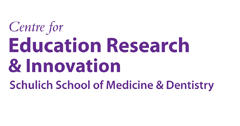Event Title
Improving the Emergency Medicine Clerkship
Start Date
5-10-2011 9:25 AM
End Date
5-10-2011 9:30 AM
Abstract
The Emergency Department (ED) is a teaching venue that offers an incomparable spectrum of undifferentiated patient presentations. There is a constant tension created when trying to balance patient flow with the learning needs of medical students and residents. Medical students have the most to learn but are often most affected by compromise when patient care demands take precedence.
The current Emergency Medicine education experience for third year UWO medical students consists of a ten clinical shift rotation in the ED at one of two teaching hospitals under the traditional apprenticeship model. Given the relatively high volume of learners and short time frame involved, it is difficult to be strategic about the cases to which clinical clerks are exposed, leaving gaps in meeting their learning objectives.
One potential solution to these problems would involve modifying the clinical clerkship to improve the experience of medical students, the experience of faculty and patient flow in the ED.
We are proposing to change the first three shifts of the clerkship into three eight hour teaching shifts attended concurrently by all six clinical clerks and supervised by one faculty member who has patient care responsibilities restricted to those encountered in this teaching. Emphasis will be placed on advanced clinical skills, incorporating the concepts of problem focused differential diagnosis and simultaneous treatment and investigation.
Impact on the medical student (logbook, focus group and rotation evaluation), impact on the teacher (interview) and impact on the department (faculty productivity with and without a clerk) will be evaluated.
This document is currently not available here.
Improving the Emergency Medicine Clerkship
The Emergency Department (ED) is a teaching venue that offers an incomparable spectrum of undifferentiated patient presentations. There is a constant tension created when trying to balance patient flow with the learning needs of medical students and residents. Medical students have the most to learn but are often most affected by compromise when patient care demands take precedence.
The current Emergency Medicine education experience for third year UWO medical students consists of a ten clinical shift rotation in the ED at one of two teaching hospitals under the traditional apprenticeship model. Given the relatively high volume of learners and short time frame involved, it is difficult to be strategic about the cases to which clinical clerks are exposed, leaving gaps in meeting their learning objectives.
One potential solution to these problems would involve modifying the clinical clerkship to improve the experience of medical students, the experience of faculty and patient flow in the ED.
We are proposing to change the first three shifts of the clerkship into three eight hour teaching shifts attended concurrently by all six clinical clerks and supervised by one faculty member who has patient care responsibilities restricted to those encountered in this teaching. Emphasis will be placed on advanced clinical skills, incorporating the concepts of problem focused differential diagnosis and simultaneous treatment and investigation.
Impact on the medical student (logbook, focus group and rotation evaluation), impact on the teacher (interview) and impact on the department (faculty productivity with and without a clerk) will be evaluated.
